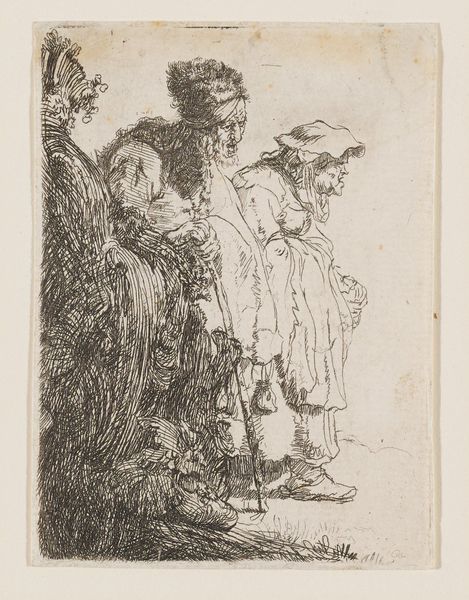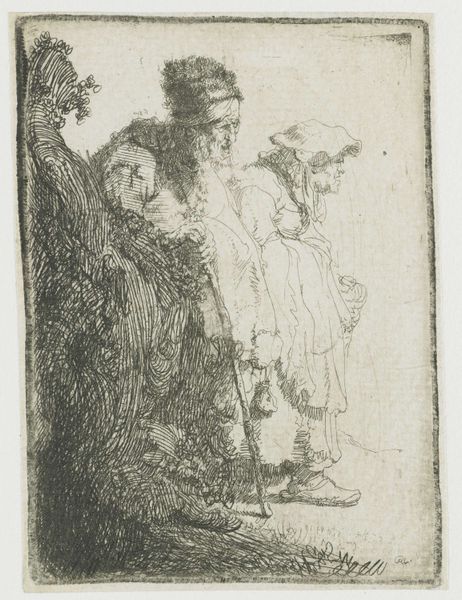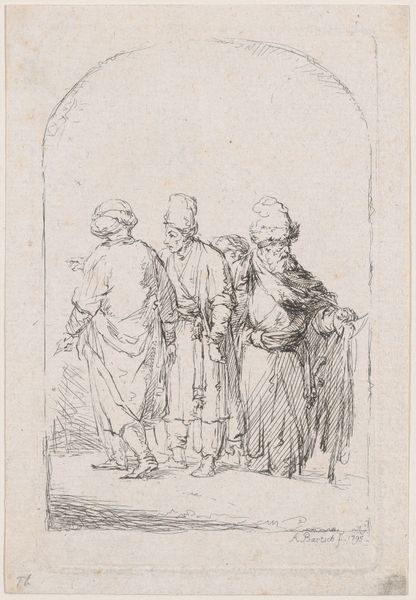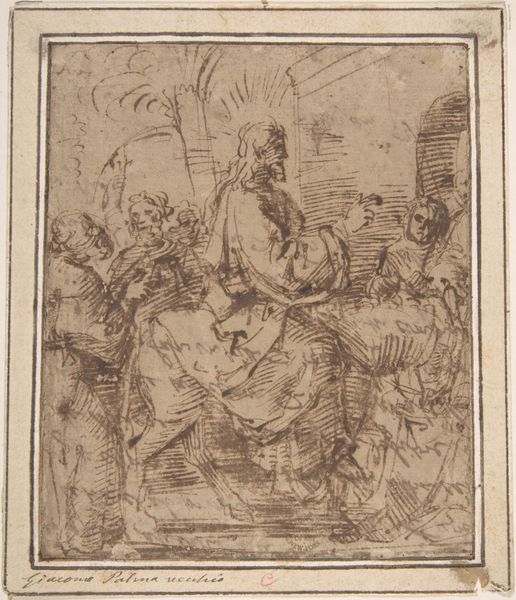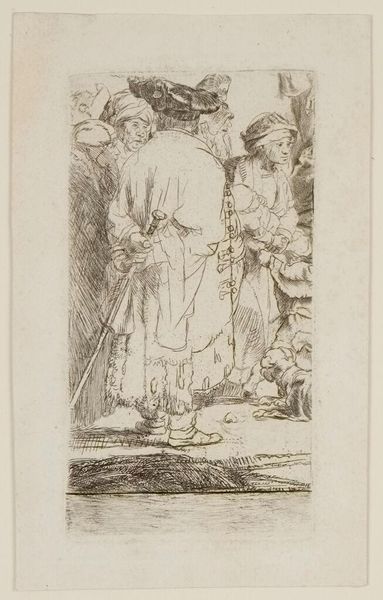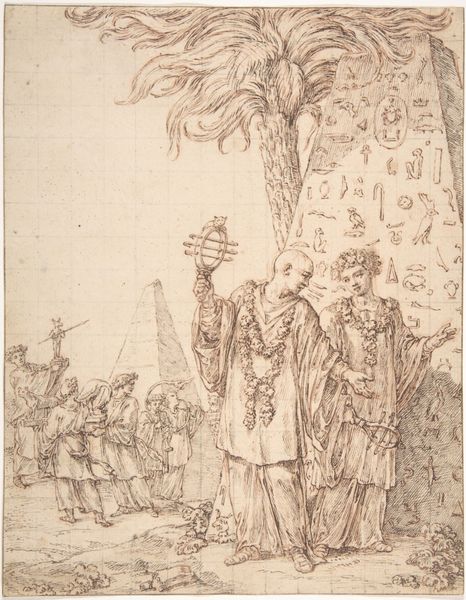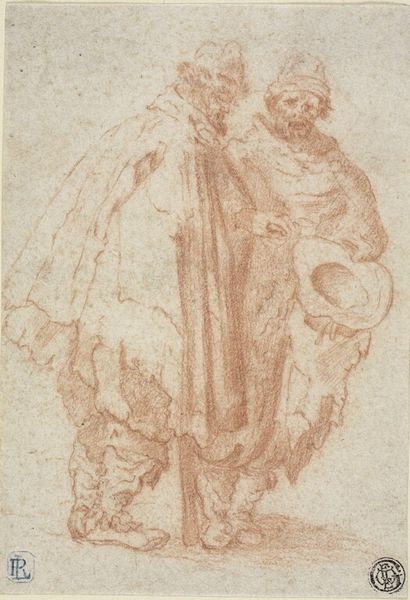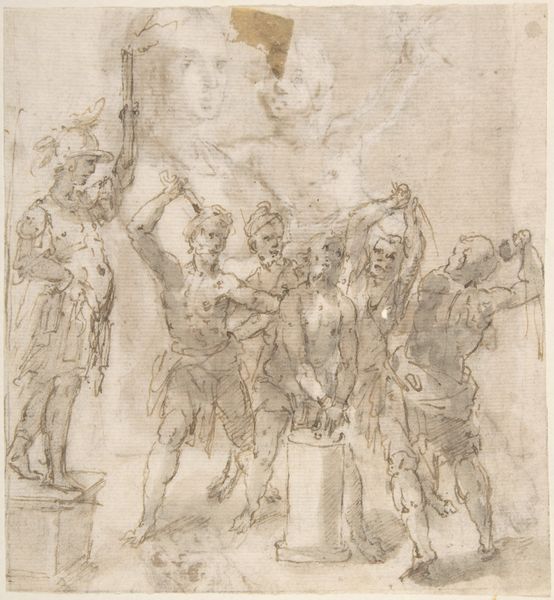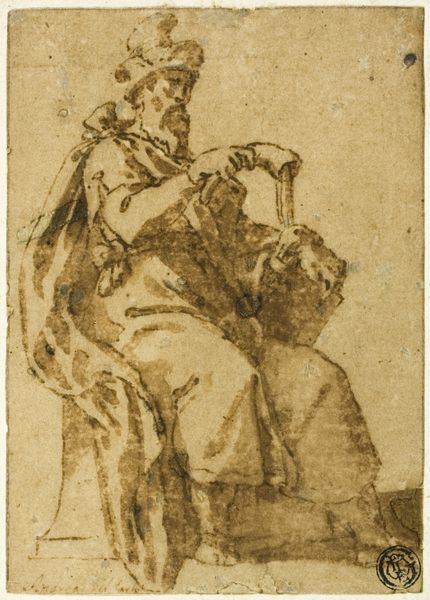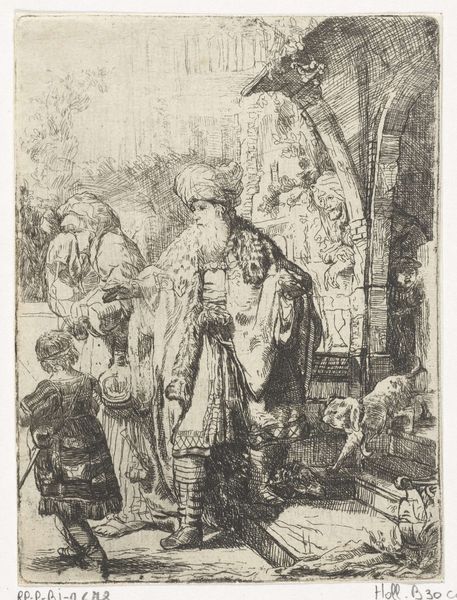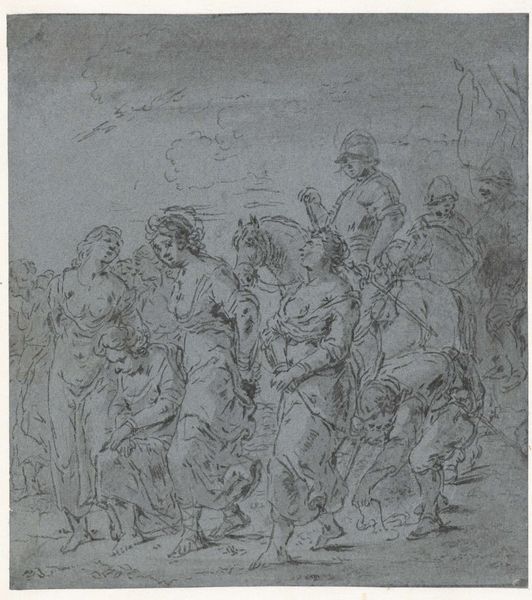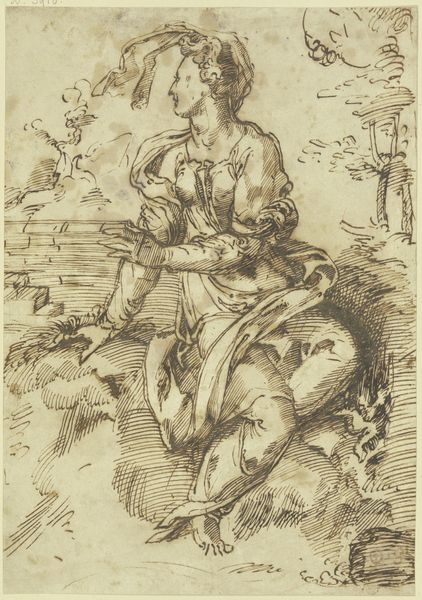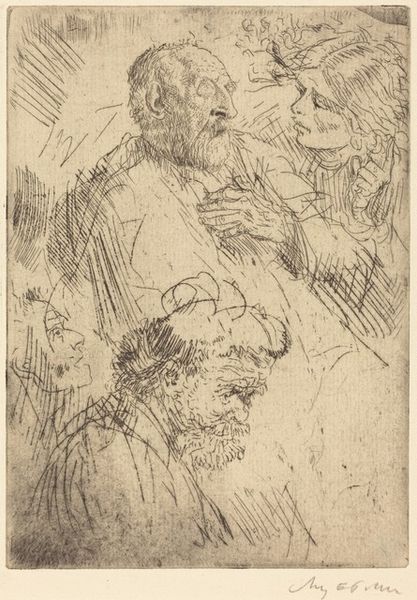
drawing, paper, ink, pen
#
portrait
#
drawing
#
light pencil work
#
narrative-art
#
baroque
#
pen sketch
#
pencil sketch
#
figuration
#
paper
#
personal sketchbook
#
ink
#
sketchwork
#
pen-ink sketch
#
line
#
pen work
#
sketchbook drawing
#
pen
#
genre-painting
#
sketchbook art
#
initial sketch
Dimensions: height 320 mm, width 87 mm
Copyright: Rijks Museum: Open Domain
This anonymous etching of a "Beggar Man and Woman Behind a Bank" offers a glimpse into the underbelly of Dutch society. While undated, the work likely originates from the 17th century, a period of immense economic growth for the Netherlands, but also one marked by stark social inequalities. The image presents a marginalized couple, their ragged clothing and weary expressions hinting at their struggle for survival. They are positioned behind a "bank," a term that evokes financial institutions but also suggests a physical barrier, highlighting their exclusion from mainstream society. In a time when Dutch art celebrated prosperity and mercantile success, this print offers a counter-narrative, revealing the hardships faced by the less fortunate. Understanding this artwork involves delving into historical records of poverty, poor laws, and social welfare in the Dutch Republic. By considering these factors, we can appreciate how art serves as a critical commentary on the social structures of its time.
Comments
No comments
Be the first to comment and join the conversation on the ultimate creative platform.
